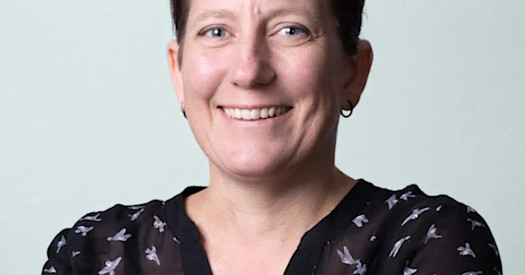 Julia Foreman: 'Genetics is fascinating, particularly developmental genetics.'
Julia Foreman: 'Genetics is fascinating, particularly developmental genetics.'
Even before making strides in human genetic variant interpretation, Dr. Julia Foreman, Ph.D., always enjoyed studying the effects of mutations.
“Genetics is fascinating, particularly developmental genetics,” she proclaims.
For her doctoral degree, Foreman studied how mutations in the model plant Arabidopsis thaliana (common name: Thale cress) affected flower development and plant growth. After completing her Ph.D. in genetics and molecular biology, she began coordinating a multi-centered plant systems biology project at the University of Edinburgh studying the effects of temperature on gene networks.
In a stroke of serendipity, she saw a unique position advertised for a human genetics project and decided to take the leap. She transitioned to human genetics in 2015, joining the Wellcome Sanger Institute to coordinate projects characterizing mutations that contribute to cancer and aging.
Her position at Wellcome Sanger was pivotal. Improvements in sequencing technologies generated a boom of human genetic data. As more patients’ genomes were sequenced, more mutations were found that lacked any clinical interpretations. Foreman saw the power of multiplexed assays of variant effect (MAVE) data and how these data could address the growth of variants of unknown significance.
In 2016, she began leading DECIPHER project, and moved with it to the European Molecular Biology Laboratory European Bioinformatics Institute in 2022. Established in 2004, DECIPHER (Database of Genomic Variation and Phenotype in Humans Using Ensembl Resources) is an international web-based platform that shares rare disease phenotype-linked variant data and provides interpretation for clinical use. It’s a record-based system with both genotype and phenotype information, allowing clinicians to better diagnose and treat patients.
“In the early days clinicians found there were no good tools to interpret their patients’ mutations or copy number variants,” she said.
DECIPHER rose to meet those needs and delivered a versatile and robust platform where new experimental or patient data and tools can be easily integrated. Each element is presented in a format optimized for use by a broad range of professionals supporting the delivery of genomic personalized medicine. Over 3,500 publications have cited DECIPHER since its conception.
In her time at DECIPHER, Forman has helped facilitate the integration and visualization of MAVE experiments in DECIPHER in a clean and standardized way. She expedited mapping the experimental data back to the human reference sequence, allowing DECIPHER to better display MAVEDB (https://www.mavedb.org/#/) repository data.
In the DECIPHER’s March release (launched March 27, 2024), functional data from MAVEs are easily accessible, along with new clinical interpretations for variants found in non-coding regions, variant scores based on evolutionary conservation, and much more.
It is no surprise then that Foreman was asked to co-chair with Dr. Alan Rubin of the Atlas of Variant Effects Alliance (AVE) Data Coordination and Dissemination Workstream. She will focus on the discovery of MAVE projects and the standardized dissemination of the MAVE data, as well as promote the growth of the MAVE field by the development and implementation of standards and guidelines.
Her priority is the interpretation of MAVE data for clinical use. For instance, datasets can have multiple analyses and multiple scoring metrics. Some scoring metrics are better tailored for clinical interpretation than others, so it is critical to ensure that what is tested in an experiment is relevant to a particular disease or phenotype.
“The most exciting thing about clinical genomics is the scale of the data available now,” she explains. “There is so much potential in the reclassification of variants.”
With great data comes great responsibility. Foreman hopes to harness the data as prodigiously and safely as possible for the clinical community.
[Sayeh Gorjifard served earlier this year as a Communications Fellow with the Atlas for Variant Effects Alliance and the Brotman Baty Institute. Contact her at sayeh.gorjifard@gmail.com]


